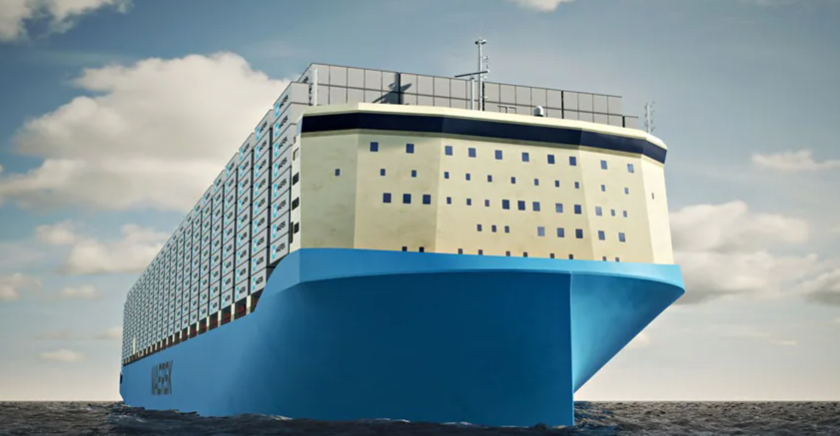 By Michael Grey*
By Michael Grey*
In the compromise that dictates the design of a ship, you don’t have to be cynical to observe that the needs of the crew come last, after the cargo, machinery and anything else that might remunerate the owner. The crew, it might be said “just fit in where they can”. It has been the same throughout history, and you might think of Vikings crossing the Atlantic, sheltering under the thwarts, or sitting in the lee of their captives, to the grim dormitories of stokers and stewards in the trans-Atlantic liners, in the eyes of the ship or below the waterline, far from the madding crowd of happy passengers upstairs.
I sailed in a few old ships that were built in the 1920s, with forecastle accommodation for the ratings and it was a fact that thirty years on, very few of the best seafarers were willing to sail in them. They knew that they could find some more desirable residence aboard vessels with pleasant and spacious accommodation amidships, where you didn’t have to cope with damp, foul air and violent motion in heavy weather. And for some years, no sensible designer would think of sticking human beings in such locations aboard ship.
It’s funny how expediency changes convention. Until about the 1970s naval architects had been trained to design ships with certain unarguable characteristics, like a rise of floor that differentiated between a ship and a barge, a shapely sheer, or camber that helped to shed boarding water, a cruiser or counter stern, a forecastle and poop to help to keep the sea stay where it should. Ships had to be manoeuvred in restricted waters and it was thought that the bridge ought to be around amidships, near the longitudinal centre of gravity or “pivot point”. Even tankers in those days, with the machinery aft, still retained a midship bridge.
Then, almost without anyone noticing, all these conventions were swept away. It was found far easier by shipbuilders to forget about the rise of floor or sheer and construct the ship on a flat building dock and camber was dismissed as unimportant. Three-dimensional curved plate was judged to be far too expensive and we saw ships emerging with a great flat backside, which only an imaginative naval architect would consider an improvement to seakeeping. There were flares that wouldn’t have disgraced an angle-decked aircraft carrier, both forward and aft, such was the demand for deck space to park boxes.
Crews ‘fit in where they can’
And just like the old days, the crew found themselves having to “fit in where they can”, away from the revenue-earning locations. A shipmaster of some experience summed it up really quite well, describing various ships he had sailed where, within a few years, he lived amidships aboard a reefer; so far aft on a container ship that he actually resided abaft the stern frame in a towering steel island; and then right forward in a car carrier, where he overlooked the windlass.
Old sailors used to say about a ship – “if it looked right, then it probably was seaworthy”, but I have often wondered what their reaction might have been to some of the strange designs that have emerged in recent years. “X-bows”, extreme bulbs, “ram-bows”, wedges and other strange shapes have emerged from the hydrodynamic box of tricks, competing for the owners’ attention. There was a rather good cartoon a few years ago, the caption noting, about one of these funny looking ships – “I can’t tell whether she is going ahead or astern, or submerging!” I suppose you can only tell whether these designs live up to their extravagant claims when they get to sea and you ask those who have served in them.
Now we have an exciting video from Maersk in which they reveal the design of their latest ultra-sustainable 16,000teu container series (per attached photo), which will consume green methanol and aboard which the crew will serve as a sort of breakwater on the bow for the nine-high deck stow of boxes abaft the bridge. The video, introduced by a sonorous blast from its siren, is somewhat short of detail, but with the exception of this accommodation island perched on the forecastle, every metre of length is usefully employed for the stowage of containers. Even the single offset funnel is so far aft you could hang the ensign on it. The machinery is so far away from the engineers’ accommodation that they will have to be very fit when the alarms go off in the middle of the night. The first ship handling operations in tight places might be quite exciting, as they whirl around their “pivot point”!
I guess we will just have to wait and see whether these revolutionary ships are a success, and represent the first of a new era in box ship design which will sweep the world. If you sail on them, you will at least get a nice sea view, rather than being forced to peer at the back end of a container for months on end. And it would be nice to think that the designers will come up with something equally exciting to address currently pressing issues of cargo securing or fire safety. But there can surely be no argument that the crew of these dramatic ships have surely been “fitted in” where they can, on the only available space.
*Michael Grey is former editor of Lloyd’s List. This column is published with the kind permission of Maritime Advocate Online.





